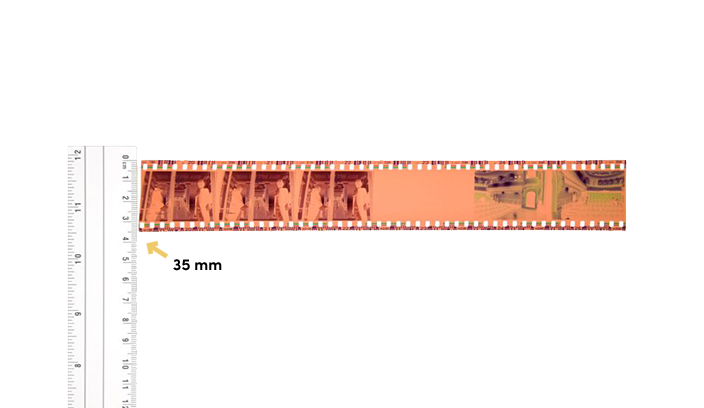Read more
![]()
Black-and-white or colour?
Colour negatives look a bit different. You can recognise them from the orange sheen on the film (which sometimes turns brown over time). Just like black-and-white negatives, they are usually cut into four, five or six pieces and provided back together with the developed photos so that they can be used to make more prints again at a later date.
Film strip or sheet film
Photo negatives appear on film strips or sheet film. Film strips are often cut into pieces containing six negative images, although it can also be more or less, e.g. just a single image. Sometimes the strip is rolled up, e.g. in a cylindrical plastic or paper box.

Flammable
Until the 1930s, film was made from nitrate, a highly flammable material that releases nitric acid as it chemically decomposes. Nitrate film was then replaced by cellulose acetate film, but this gave rise to a new problem because this carrier is susceptible to . If the film smells of vinegar, or you see any cracks and the emulsion layer coming away from the carrier, these are signs of vinegar syndrome.
Negatives on nitrate or acetate film should therefore be digitised as soon as possible.
You can find a detailed guide at projectcest.be that will help you to identify nitrate film. Filmcare can also help with identifying nitrate, cellulose acetate or polyester film.
Different film formats
Negatives can appear on many different types of film and formats. You can find a handy overview here.
Interested to discover more about the wonderful world of negatives? Read more here:
Did you know …
… negatives were also produced on glass until the 1960s? You can find more info about glass negatives here.









